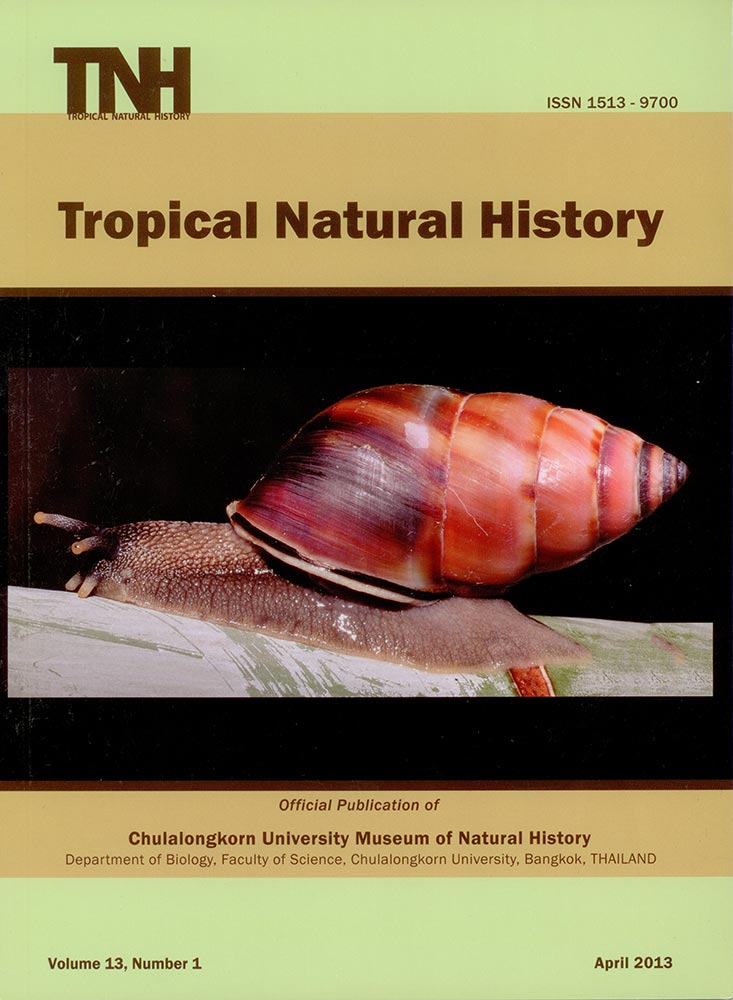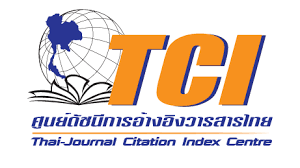Population Structure and Reproduction of the Elongated Tortoise Indotestudo elongata (Blyth, 1853) at Ban Kok Village, Northeastern Thailand
DOI:
https://doi.org/10.58837/tnh.13.1.103039Keywords:
Indotestudo elongata, tortoise, reproduction, population structure, conservationAbstract
The population structure and reproductive biology of the elongated tortoise Indotestudo elongata, were investigated at a 492 ha site at Ban Kok Village, Khon Kaen Province, Thailand, from May 2007 to August 2009. A total of 1,195 individual tortoises (391 males, 369 females and 435 unsexed juveniles) were captured yielding a minimum population density of 2.43 ind. per ha. The age and size structure exhibited a normal (close to 1:1) male: female sex ratio of 1.07:1, but the proportion of early and adult developmental stages in the population was high. Thus, in a closed non-expanding population, only a small proportion of the young tortoises will replace the higher age classes in the population. Tortoises at all ages had a mortality risk from human activities, such as off-road cars, burning rubbish and landscape modifications, but no natural predators were found, although parasites were evident. Mating was observed from May to August with oviposition at the end of the rainy season (October) until March. The mean clutch size was 4.53 ± 2.26 eggs. Hatchlings emerged at the beginning of the following rainy season (April to June). One female produced more than one clutch in a season. The undisturbed hatching success was high (81%), but nest disturbances reduced the overall hatching success to 60.3%, with a relatively low hatchling survival rate over the first three months (67%). The main cause of the hatchling mortality is unknown, but minor causes were cars and large cattle. Both adult and juvenile forms consumed herbaceous leaves, fruits, mushroom, grass, earthworms, carcass, food particles and animal excrement. The elongated tortoise population at Ban Kok Village has not been threatened severely, but short- and long- term monitoring should be conducted.
Downloads
Published
How to Cite
Issue
Section
License
Chulalongkorn University. All rights reserved. No part of this publication may be reproduced, translated, stored in a retrieval system, or transmitted in any form or by any means, electronic, mechanical, photocopying, recording or otherwise, without prior written permission of the publisher











